Maryland flex
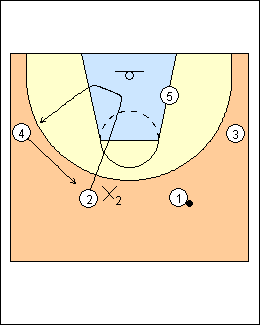 | 1 Gary Williams You have to have an offensive system that you are confident teaching. Keys are being to get the ball inside, and players who can pass the ball. They can put in flex on the first day of practice. Make your guys throw skip passes and look inside every time from the perimeter. Teach all players how to play in the post, teach perimeter players to cut and set screens to help each other get open when the ball goes inside. Use a two-guard front, 12-15 foot spacing, ballside is always strongside (3 players). 5 is just on top of the block, and would fade a bit to the baseline if 1 drives middle. 2 backcuts if overplayed, forward (or wing) 4 replaces. coachesclipboard.ca - Great Britain women - to start the offence, trailer 5 [or 4] downscreens near the elbow for the weakside guard. |
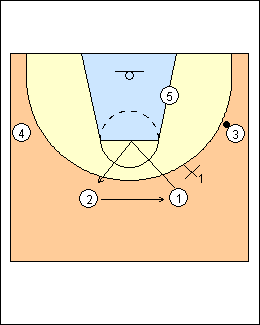 | 2 When 3 has the ball, 1 backcuts if overplayed and bounces out, 2 replaces, they want to be able to swing the ball quickly. 3 looks for 1 if defenders switch. |
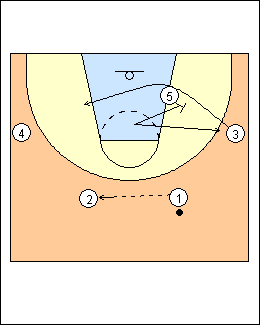 | 3 On a guard-guard pass, the post steps up to set a screen, the wing cuts hard then posts up, he just goes, there are no fakes, turn it into a track meet. 5 gives it a half second, "crabs" into the middle with side steps (a rollback), then gets out to the forward spot. The better the screen, the more X5 has to help. 2 would throw a bounce pass into 5. If X3 cheats and goes over the screen, 3 bounces off the screen, the screener turns and gives him another screen. If the defenders switch, 5 can keep X3 on his back and get a pass inside. If X3 jams the cutter instead of moving towards the ball, 3 goes over the top of the screen (give it a little angle), then 5 goes to the basket. Lawrence Frank - if X3 goes low and X5 bumps the cutter high, 5 spins to the basket for a lob pass (if athletic), or bumps back to the short corner. Ian MacKinnon - if the cutter goes over the screen, the screener goes to the short corner (his defender helps high). |
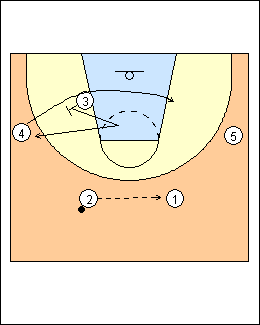 | 4 The pattern repeats on another guard-guard pass. Note that this version of flex does not use a downscreen after a flex cut. Bob Schlosser - if 1 is overplayed, 2 runs a shallow cut with a dribble (exchanging positions). See Offence - Denial counters. |
 | 5 Pass to a forward if you think the post is open. 5 doesn't think about shooting, take advantage of the ballside triangle, just look to get the ball inside immediately, usually on the baseline side away from the post defender. Run the triangle if there is a mismatch at the post. The offside players exchange, it gets a guard into cutting position. Bob Schlosser - on a pass off the elbow (to 5), 2 and 1 would stagger screen for 3. Tubby Smith - if 5 is in the low post, they don't want to bring him out, post him up, stagger screen for a shooter in the other corner, into flex. |
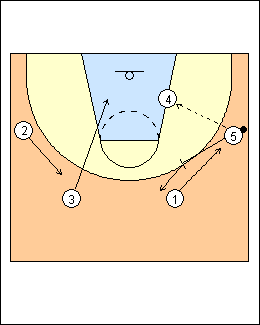 | 6 On a post feed the passer upscreens for the guard then exchanges positions, the guard becomes the outlet for the post. A flash from the weakside guard spot is often great, the forward fills. Maryland does a lot of triangle passing drills, exchange on a pass inside. 5 on 0, make them run four flex cutters. All players do post drills. |
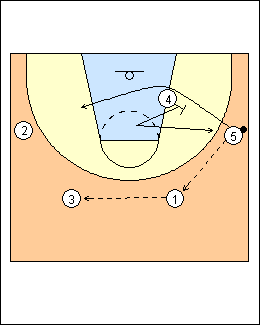 | 7 9 times out of 10 on a forward-guard pass, just get it and pass. |
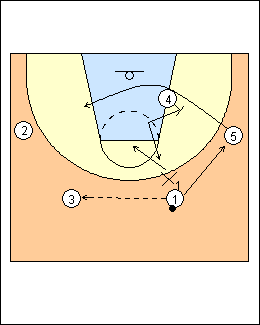 | 8 If X1 gets back into the help area where 4 is going to rollback on the guard-guard pass, 1 walks away, 4 will fill the open spot. Bob Schlosser - his team doesn't flex downscreen, 1 fades to replace 5, 4 comes up the line to replace 1, and on a pass has room to shoot or pull through before a flex cut comes, or pass to the corner. 4 backcuts if denied. If X5 cheats into the lane on the flex cut, 5 runs a "go" counter, pushing 4 back across the lane and coming out to replace 1. If defenders switch on the flex cut, 4 will duck in after screening, this can be combined with a "go". Great Britain - 1 passes and clears to the corner, 4 backscreens above the block, flashes to the elbow, then pops out for a pass. |
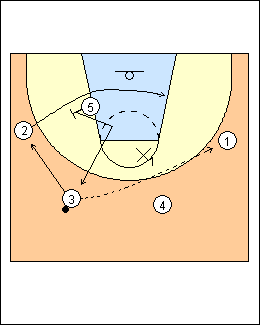 | 9 3 skip passes to 1, 2 flex cuts, 5 rolls back and then exchanges with 3 (on a pass to a forward). 4 can come up to fill the open spot on the skip pass to 1. |
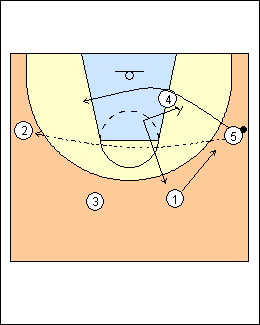 | 10 A skip pass from the forward spot can be very good against some teams, bypass the guard, the passer runs while the ball is in the air. A forward-forward pass is best, then exchange weakside (shown). |
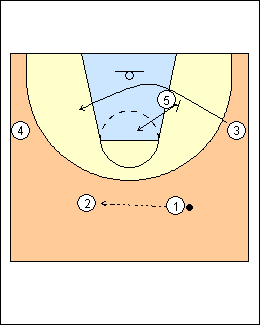 | 11 Counters a) Hold Start with a guard-guard pass, flex cut and rollback. |
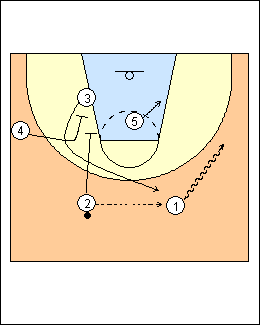 | 12 There is no flex cut on a return pass to 1, go after rollback guy 5, 1 can pass directly inside or dribble down if he sees X5 come over the top. 1 would slide to the corner if he passes to 5 and X1 dives to double team. 4 and 2 stagger screen for 3 on the weakside, 3-2-4 can then fill spots to get into the 2-3 flex set. |
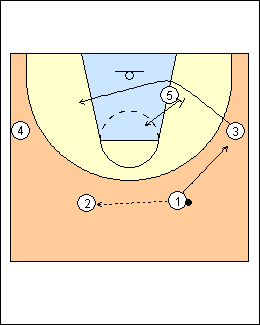 | 13 b) Special play (quick hitter) Flex cut and rollback on the guard-guard pass, and 1 slides away. |
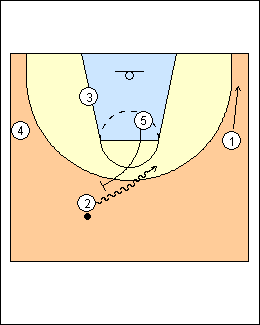 | 14 5 continues his move and ballscreens. If X5 helps, 5 steps back for a pass and 3-point shot if he can shoot, or there is a triangle on that side. If X5 does not help, 2 drives and has a pass to 1, they can get back into the flex set. |
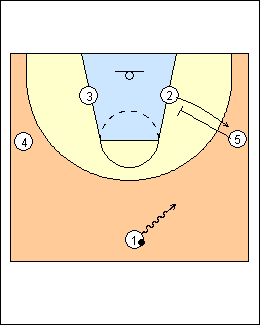 | 15 Getting open a) Dead-ball set 2 and 3 are at the blocks, 1 declares a side, 5 downscreens for 2. |
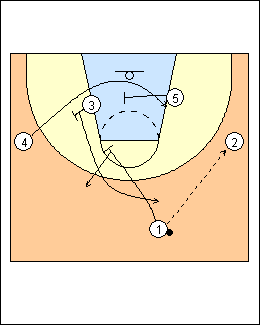 | 16 3 and 5 screen for 4, 1 passes to 2 and downscreens for 3. |
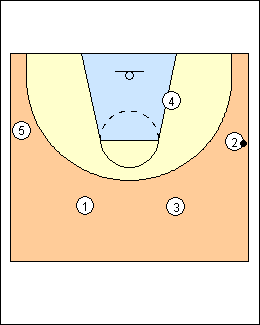 | 17 Then it's into the flex set. |
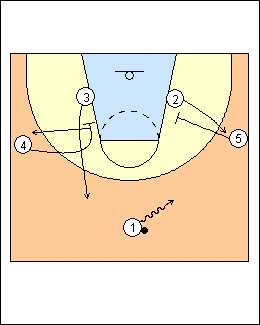 | 18 b) Regular 2-set A quicker hit from the same set. 5 downscreens and holds, 4 screens for 3 then pops out. |
 | 19 |
This page was made with Basketball playbook from Jes-Soft
